Folk Dance Of Tripura
TRIPURA FOLK DANCE
The main folk dance of Tripura is – the Hozagiri dance of Reang community, Garia, Jhum, Maimita, Masak Sumani and Lebang boomani dances of Tripuri community, Bijhu dance of Chakma community, Cheraw and Welcome dances of Lusai community Hai-Hak dance of Malsum community, Wangala dance of Garo Community, Sangraiaka, Chimithang, Padisha and Abhangma dances of Mog community, Garia dances of Kalai and Jamatia communities, Gajan, Dhamail Sari and Rabindra dances of Bengali community and Basanta Rash and Pung chalam dances of Manipuri community.
Each community has its own traditional musical instruments. To call a few are – ‘Khamb (Drum)’, Bamboo flute, ‘Lebang,’, ‘Sarinda’, ‘Do- Tara’, and ‘Kheng Rong’, etc.
Traditional Dances of Tripura:
1. Garia Dance
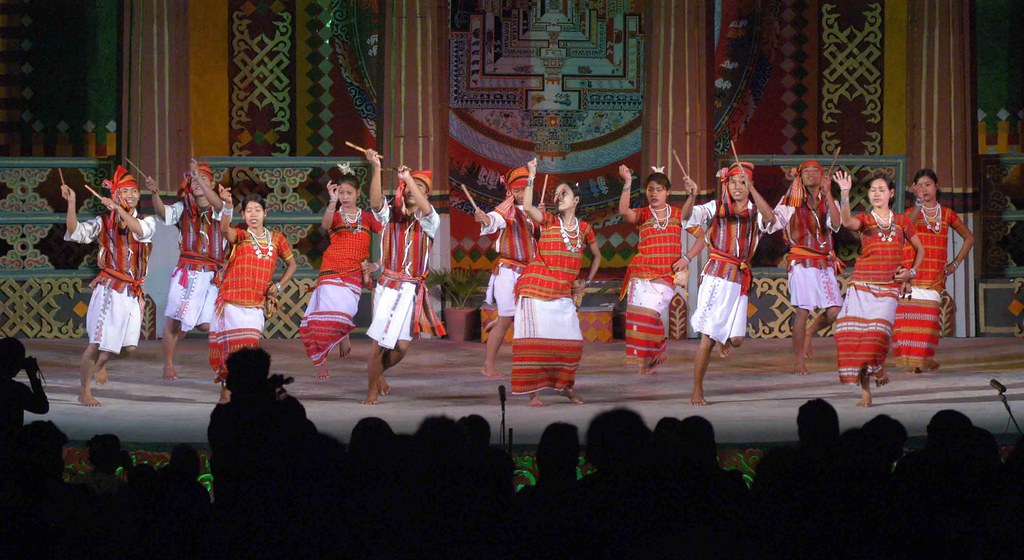
The life and culture of Tripuris revolve around Jhum (shifting) cultivation. When the sowing of seeds at a plot of land selected for Jhum is over by middle of April, they pray to the God ‘Garia’ for a cheerful harvest. The celebrations attached to the Garia Puja continue for seven days once they seek to entertain their beloved deity with song and dance.
2. Lebang Boomani Dance
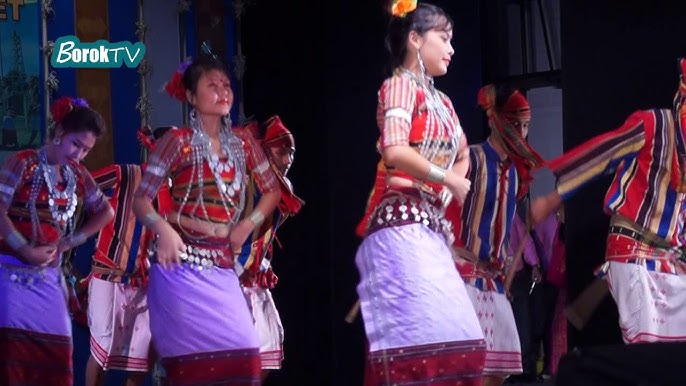
Lebang Boomani dance (also Lebang Bumani) is a harvest dance performed by the Tripuri people of Tripura, India. It is one of two dances associated with the Tripuris, the other being the Garia dance that was performed at the time of sowing crops.
3. Hozagiri Dance
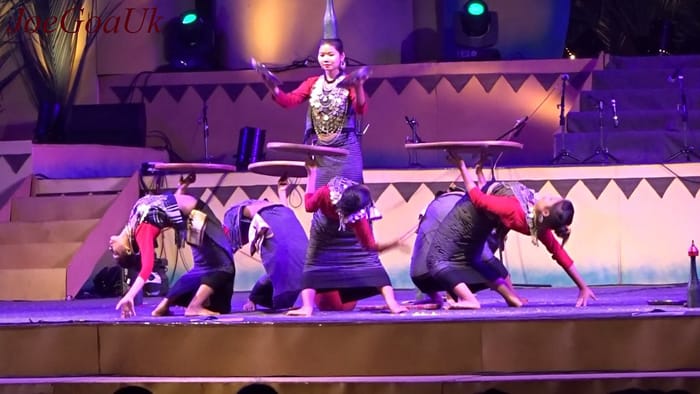
While the theme of the dance remains almost to be identical to other tribes, the dance sort of the Reang community is quite different from others. The movement of hands or maybe the upper part of the body is somewhat restricted, whereas the movement beginning from their waist right down to their feet creates a wonderful wave.
Standing on an earthen pitcher with a bottle on the top and a lighted lamp on it, when the Reang belle dance twisting rhythmically the lower part of the body, the dance bewilders the onlookers. The Reangs also use musical Instruments like Khamb, Flute made from bamboo and a bamboo cymbal. The Reang women like better to put on black Pachra and Rea.
Reang women placed on coins ring, which generally covers their entire upper region. They also placed rings made of coins in their ears. they’re fond of fragrant flowers as ornaments to metal things.
4. Bijhu Dance

This popular sort of dance is characteristic of the Chakma community. Bijhu means ‘Chaitra-Sankranti’. ‘Chaitra-Sankranti’ denotes end of the Bengali civil year. it’s during this period when the Chakma’s sing and dance to bid goodbye to the year just ended and welcome the New Year. The dance is beautifully orchestrated with the rhythm playing of what’s known as ‘Kheng-garang’, ‘Dhukuk’ and flute. Chakma women wear flowers on their hair and metal ornaments.
5. Hai-Hak Dance
Like other tribal communities of this State, the social and economic life of the Hallam community also revolves around Jhum cultivation. At the top of the harvesting season, the Malsum traditionally adore Goddess Laxmi. They enjoy this festive occasion for his or her famous Hai-Hak dance. it’s also a community dance with exquisite beauty. The rhythms of the dance reflect the tradition inherited from distant past.
6. Wangala Dance
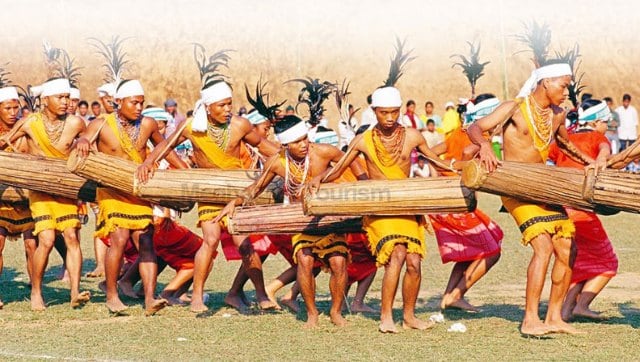
After the happy harvest ‘Wangala’ (1-st rice eating ceremony) is performed in every house. The Sangnakma, the head of the community visits every house and cuts a pumpkin as an element of worship. This pumpkin was sacrificed on this occasion. then the women dance to the beat of ‘Dama’ and ‘Aaduri’ made of buffalo horn. The dance projects the rehearsal for war.
7. Welcome Dance
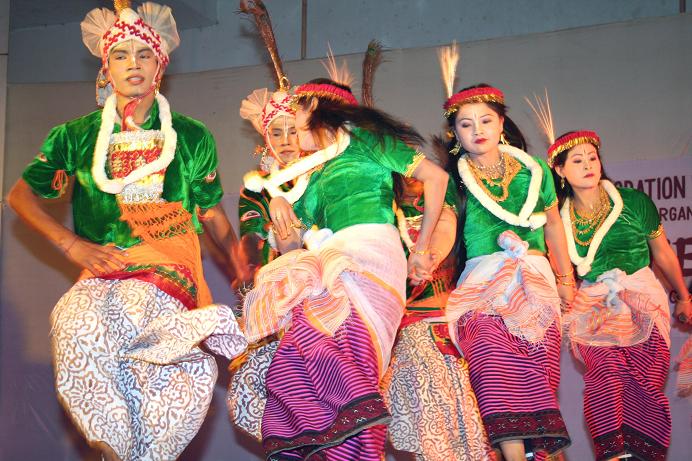
The Lusai girls are well dressed. They typically wear colorful cloth. They performed a welcome dance whenever any visitor pays a visit to their house. This is often a very colorful dance where young girls of the entire community take part. Their dress is so colorful that the ornaments are very much required except for fragrant flowers.
8. Cheraw Dance

The Darlong reposes faith in after life. They believe that man is destined to travel to heaven after death. Incidentally, they think that if a pregnant woman dies, she feels it very difficult, with all her physical strains, to trace the long journey to Heaven.
Hence at the last stage of her pregnancy – after all just at the time or immediately prior to delivery all her relatives perform this ‘Cheraw’ dance in-group throughout the day and night to instill confidence in her mind of that woman.
They’re firm in their belief that even if the woman dies at this juncture, it’ll be possible for her to go to heaven with the courage and confidence together with joy gained through the sound of bamboo as the rhythm of the dance produced till her death.
9. Sangrai Dance

Sangrai dance performed by the Mog community people on Sangrai festival falling within the month of Chaitra of Tripura calendar year. Young boys and girls particularly, celebrate the day through cultural programs to ask the New Year.
Folk Musical Instruments of Tripura:
Musical Instruments of Tripura are made from materials that are available locally. The people of Tripura have respect for the strong natural forces and check out to pacify animistic spirits and the local gods.
These instruments are made from bamboo, skin, wood, and animal horns. It’s believed that each of these musical instruments has the potential of conferring material benefits. The musical instruments of Tripura are an important part of the traditional folk music of the region. The favored musical instruments described:
1. Sarinda

It’s a string instrument that is used by most of the tribes and is also known as the Sarinda Uakhrap. it’s made of bamboo. It’s like a peacock and to some extent like a mandolin. It also has an oval shaped void wooden vibrating chamber which roofed with a thin skin. Its wider top portion is open.
The waist is narrow shaped. The instrument is about 65-70 cm. The lower portion is oval. the center portion is large, and the edges are wide. The cave portion was uncovered. within the top portion, three pegs are fitted to fasten the strings. The strings are either metal or the thread of Muga or an animal’s gut. Sarinda is played by a crude “bow” that’s made of horsehair. By tightening or loosening the strings the tuning is completed.
2. Chongpreng

It may be a type of chordophone lute, formed of bamboo. It’s a hollowed block of wood; the vibrator is covered with parchment. A wooden bridge is placed within the lower portion. The strings are tied to the lute pins.
3. Cymbals
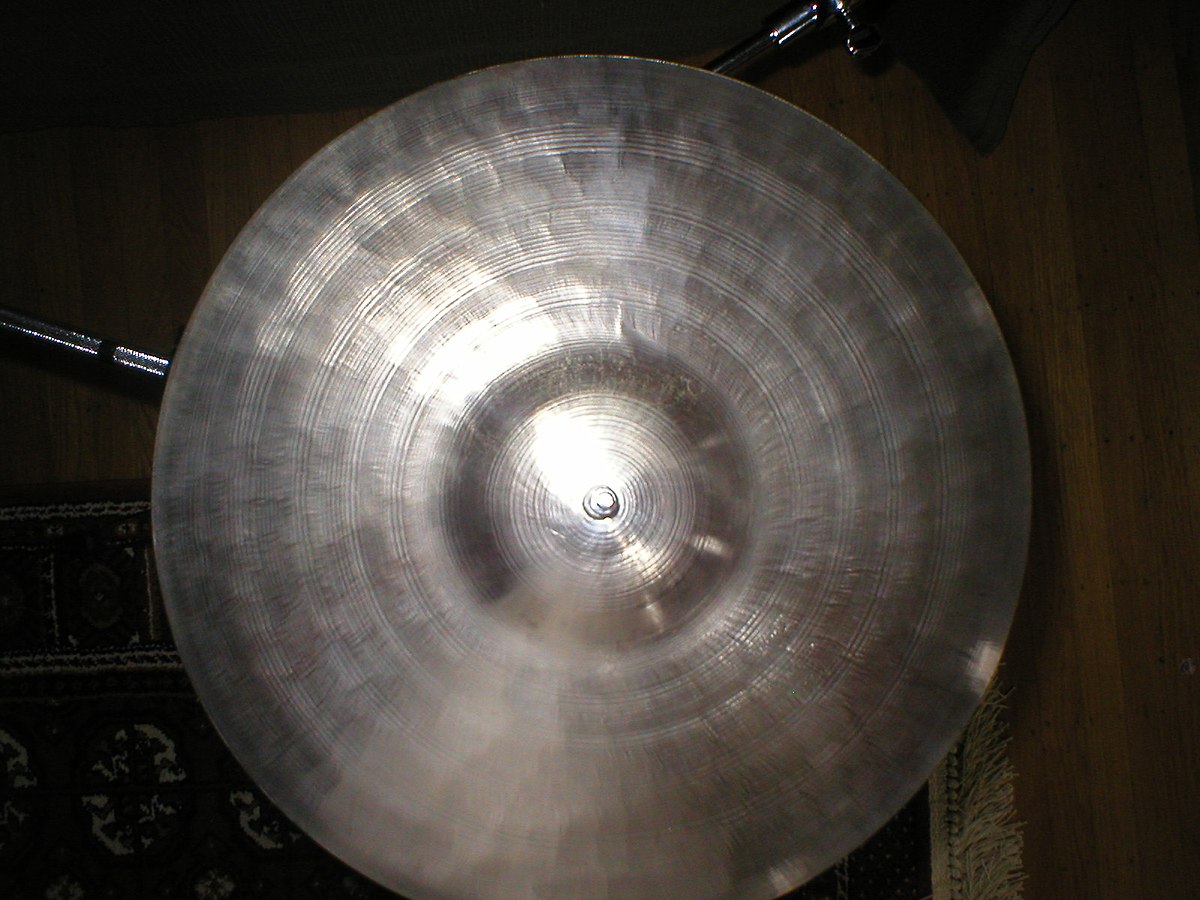
The word cymbal springs from the Latin cymbalum, which is the Latinization of the Greek word kymbalon, “cymbal”, which successively derives from kymbē, “cup, bowl”. Many of those derived from the word for plates.
4. Lebang-Lebangti
It’s a musical instrument, maybe a combination of bamboo clappers. It’s played with weird claps and twangs along with the “Lebangti” which is an ordinary bamboo clapper.
Comments
Post a Comment